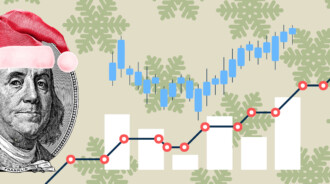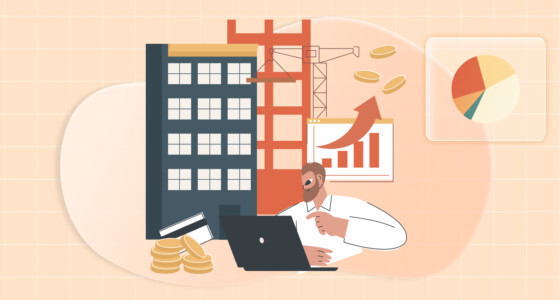

In earlier days, traders spent a lot of time reading newspapers and following economic news to conduct an in-depth analysis and find out the future of a particular industry or development in a particular sector. Today, all this information is compiled in an economic calendar, either manually but mostly digitally. In this article, we will look at the importance of the economic calendar and how you can use it to make informed trading decisions.
What is an Economic Calendar?
The economic calendar serves as a wide compilation of both upcoming and past news events that have the potential to impact the market and various assets. It can thus be regarded as a compendium of information that helps traders, especially day traders, formulate a trading strategy through fundamental analysis. The aim is to maximize profits and minimize the likely losses.
The task of traders to formulate or use an economic calendar has been made easy by many online trading sites or websites that provide traders with an updated, mostly accurate calendar.
What Does an Economic Calendar Offer?
A typical economic calendar gives the details of events and the likely effect they will have on the currency. The calendar has varied time and data categories filters to simplify the trader’s job. It covers data on a daily, weekly, and monthly basis.
One of the key components of the economic calendar is the forecast and previous results of similar economic activity. It enables traders to make informed and accurate decisions. After the event, it shows the actual effect of the specific event on the prices of a particular currency.
The level of volatility is shown in the Impact section. For example, you can see the high and medium volatility of the currencies in the market in the image above.
The economic calendar covers events ranging from a particular industry or sector to a global economic event. However, the focus remains on the effect it has on the currency.
Events Covered in an Economic Calendar
The events covered in an economic calendar are generally called indicators since they indicate the event’s effect on a particular currency. Primarily, these economic events are classified under two heads, as given below:
- Lagging Indicators
This indicator lags behind and measures past activities, such as inflation, unemployment, average prime rate, price index data of consumers, outstanding commercial and industrial loans, etc., to predict the future performance of an economy. Traders use this data to predict future market actions.
- Leading Indicators
The fundamental analysis of leading indicators predicts the future performance of the economy. Some of these predict the long-term effects and some short-term. The key leading indicators are average working hours, unemployment status, PMIs, stock prices, etc.

Other Calendars
Traders consider not only the economic calendar but also other ones such as the Earnings calendar, Dividend calendar, IPO calendar, Company’s splits calendar, etc. Each of these are important parameters and are thus considered important by effective traders.
Understanding Economic Activity Data
A country’s economic performance can be assessed and measured only with accurate data. The data on these economic activities can be taken from government releases, research companies or industries, official and authorized surveys, etc. Some sources and what to look for in these are discussed below.
Inflation data, PPI & CPI
Inflation is the most important economic activity since it affects the masses. They directly affect the formulation of policies by the government and central monetary agencies. Fixation of bank interest rates is one of them.
The Producer Price Index (PPI) covers the change in prices of the items which the producers/manufacturers are interested in. Both of them act as essential factors while measuring Inflation.
The Consumer Price Index (CPI) measures the price change of various products such as fuel, vehicles, consumer goods, etc.
Other factors affecting inflation are the Export and Import Price Index, House Price Index, and more. Every country has a central agency responsible for measuring and releasing inflation data. In the US, it is the Bureau of Labor Statistics (BLS); in the EU, it is done by the Eurostat; and in India, it is done by the National Statistical Office (NSO), Ministry of Statistics and Program Implementation (MoSPI).
Data on the Employment State
This data shows the economic strength and weakness of the country. A country with a low unemployment rate will have better financial stability than a country where most youths are unemployed. Central banks usually consider this as a factor while deciding interest rates. In case of a higher unemployment rate, the interest rates are kept as low to enable the unemployed youth to take loans and start their business or use them for better education.
Purchasing Managers Index (PMI)
PMI of various countries is calculated by various private firms/agencies. The sectors in which the PMI is calculated are manufacturing, services, construction, production, etc. Understanding PMI demonstrates the performance of these sectors in a country. From July 2022 to June 2023, the EU has seen a decline in PMI from almost 48 points to 43 points.
The PMI measured by S&P Global India in the manufacturing sector dropped to 57.8 in June 2023 from May’s 31-month peak of 58.7, less than market estimates of 58.0.
Sales in Retail
Retail sales are an important indicator for day traders. This gives a sign of a growing economy. The more, the better, since the maximum absorption of workers is done in this sector. An increase in sales has a direct impact on the prices of products.
So, the increase in sales also indicates economic growth. The central banks thus consider this while fixing the interest rates. Retail sales are an indirect indicator of inflation and interest in a country.
Decisions by Central Banks
The most effective and influential financial institute in any country is the Central Bank. The policies and financial decisions these banks make directly affect a country’s economy. For example, the printing of new notes and fixation of repo rates and, thus, interest rates directly affect the circulation of money in a society. Therefore, traders must always closely watch their managers’ meetings, press releases, and speeches. They may give out crucial information which may affect the trading in currency.
Advantages of Using an Economic Calendar
The following advantages are accrued by using the economic calendar:
- Preparation for the future through thoughtful use of indicators.
- Knowledge about the economic status of a country, mainly which affects the currency.
- Assistance in formalizing strategies for day traders, such as the swing trading or scalping strategy, based on the data type available.
- Finding out the market trends based on the available lagging data.
Associated Risks of Using the Economic Calendar
Sometimes, the data provided has a sudden and drastic impact on the decisions taken by traders. Sudden data may lead to panic selling or excessive buying based on the information released by a government agency or the central bank. For example, a likely trade between countries may lead to excessive buying of stocks in that industry. Similarly, the non-availability of raw materials may generate a sense of fear and can lead to large-scale selling.
Strategies for Using the Economic Calendar
Economic сalendar offers some strategies to traders. They can use any of the following or a mixture of strategies mentioned below:
- Scalping, where trades are opened and closed within a few minutes.
- Pre-data trading, where trades are placed before the data is released based on how assets have behaved.
- Pending orders can also be used to take advantage of the volatility after the data comes out.
- Position trading involves setting long-term trades based on the outlook of central banks or other major players.
- Buying the rumor and selling the news, where traders go against the actual data.
The Bottom Line
The economic calendar offers traders a plethora of important information. A trader must look for data regarding GDP, consumer confidence index, crude oil inventory, vehicle sales, housing sales, industrial production, etc.
The economic calendar is an effective and essential tool that day traders must exploit before every trade. The scheduled events and the lagging information must be the base for trade. However, remember to use the information wisely to avoid unwanted losses.










